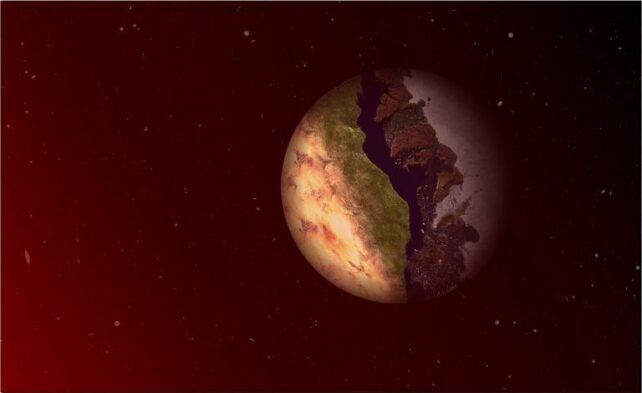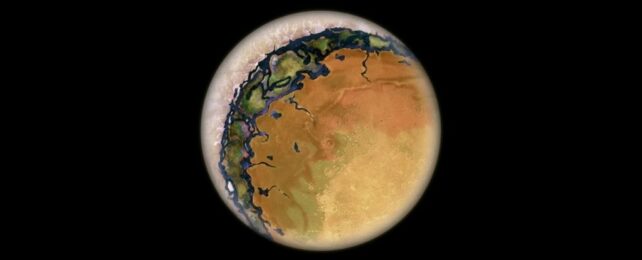Earth, currently, is our only blueprint for planetary habitability. There may be life elsewhere out there in the big, wide galaxy, but ours is the only world on which we know, for a certainty, that it has emerged.
The problem is that we've found nothing out there that's exactly like our own planet: of the same size and composition, occupying a similar spot in its planetary system, at just the right "Goldilocks" distance from its star for temperatures amenable to life as we know it.
Most of the 5,300 worlds we've found to date are, in fact, much closer to their host stars than Earth is to the Sun. Thanks to this proximity, they're not only sizzling, but tidally-locked in place. That means one side is always facing the star, cooked in permanent daylight, and the other is always facing away, in freezing, perpetual night.
A new paper has found that there is a place on closely-orbiting, dual-personality exoplanets that may be habitable: the thin twilit zone where day meets night, known as the terminator.
"You want a planet that's in the sweet spot of just the right temperature for having liquid water," says geophysicist Ana Lobo of the University of California Irvine.
"This is a planet where the dayside can be scorching hot, well beyond habitability, and the night side is going to be freezing, potentially covered in ice. You could have large glaciers on the night side."
Our search for Earth-like exoplanets is currently somewhat hampered by the limitations of our technology. Our most useful techniques are best at finding worlds that orbit their stars quite closely, whipping round in less than 100 days.
If we were only looking at stars like the Sun, this might pose a problem for potential habitability. Yet most of the stars in the galaxy are red dwarfs; smaller, dimmer, and much cooler than our own star.
While this means the habitable zone can be quite a bit closer, it also introduces the problem of tidal locking. This occurs when the gravitational interaction between two bodies "locks" the smaller body's rotation to the same period as its orbit, so that one side is always facing the larger body. It particularly occurs in exoplanets with close orbits, because the gravity of the star stretches the exoplanet in such a way that the distortion applies a braking effect. We see this with Earth and the Moon, too.
For exoplanets, sometimes known as "eyeball planets", it means the dayside and the nightside experience climate extremes that might not be the most hospitable. To determine if there's any way such worlds could be habitable, Lobo and her colleagues employed modified climate modeling software usually used for Earth.
Previous attempts to determine the potential habitability of exoplanets have focused a lot more heavily on worlds rich with water, since life on Earth requires it. The team hoped to expand the range of worlds that we should be searching for signs of extraterrestrial life.

"We are trying to draw attention to more water-limited planets, which despite not having widespread oceans, could have lakes or other smaller bodies of liquid water, and these climates could actually be very promising," Lobo explains.
Interestingly, the team's work showed that more water was likely to render eyeball planets less habitable. If the dayside of such a world had liquid oceans, the interaction with the star would fill the atmosphere with vapor that could envelop the entire exoplanet, inducing suffocating greenhouse effects.
However, if the exoplanet has a lot of land, then the terminator becomes more habitable. There, ice from nightside glaciers could melt as temperatures rise above freezing, turning the terminator into a habitable belt circling the exoplanet.
This is similar to the findings of a 2013 paper published in the journal Astrobiology. Together, they suggest that it would be worth our while adding eyeball exoplanets to the mix in future searches for the signs of life in the atmospheres of planets outside the Solar System.
"By exploring these exotic climate states, we increase our chances of finding and properly identifying a habitable planet in the near future," Lobo says.
The team's research has been published in The Astrophysical Journal.
